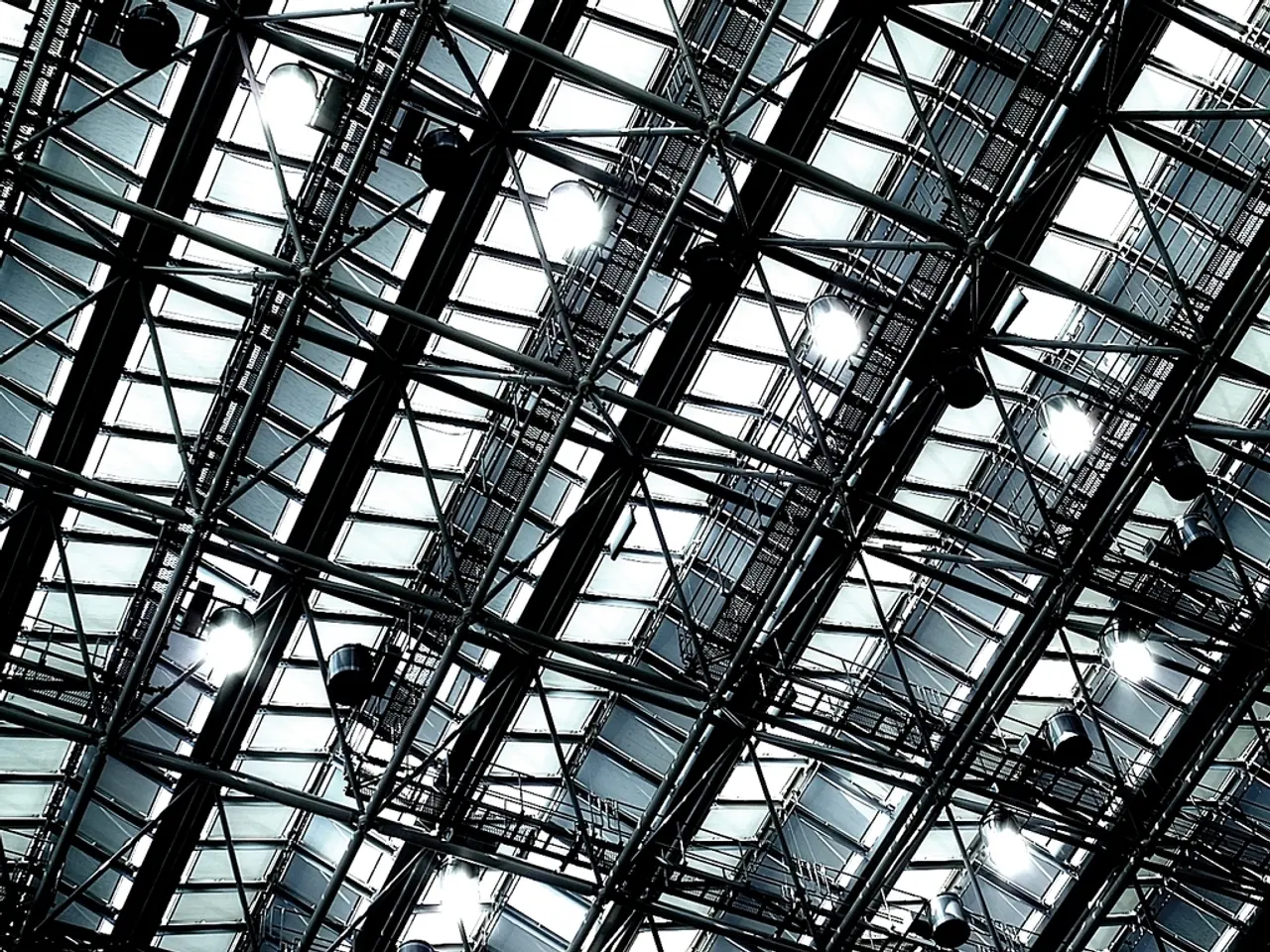Roof light choices: A comprehensive guide to selecting the most suitable style for your residence
In the realm of home improvements, rooflights have emerged as an essential element, offering a multitude of benefits from natural daylight to enhanced ventilation. This article explores the various types of rooflights available, their advantages, and considerations for homeowners embarking on their next project.
1. Fixed Rooflights
Fixed rooflights provide maximum natural daylight and are low maintenance due to their non-opening nature. Energy-efficient options often use double-glazed glass, making them a popular choice for areas where ventilation is not a significant concern.
2. Ventilated (Opening) Rooflights
Ventilated rooflights combine natural light with fresh air ventilation, reducing indoor heat and moisture buildup and improving air quality. They come in manual, electric, or solar-powered opening mechanisms, some with rain sensors for automatic closure. However, they are more expensive than fixed variants and require regular maintenance of opening mechanisms.
3. Tubular Skylights
Tubular skylights are ideal for small or interior spaces without direct roof access. They feature a roof dome connected to an interior diffuser through a reflective tube, bringing light into tight spaces effectively.
4. Dome Rooflights
Dome rooflights, available in both glass and polycarbonate, offer a cost-effective, lightweight solution. Polycarbonate domes provide good thermal insulation and are impact resistant, while glass domes offer better durability and aesthetics but can be more expensive.
5. Walk-On Rooflights
Walk-on rooflights are structural glass panels that let in natural light without compromising usable outdoor space on flat roofs, terraces, or balconies. They are suitable for basement conversions and designed with safety features like anti-slip surfaces. However, they are generally more expensive and require expert fitting.
6. Conservation Rooflights
Conservation rooflights are designed to blend with period properties and meet the requirements of listed buildings or homes in conservation areas. They are available in fixed or opening models for pitched or low-pitched roofs.
Additional Considerations
- Material: Glass offers high clarity and prestige, while polycarbonate is lighter and less expensive but with fewer options.
- Energy Efficiency: Look for double or triple glazing and good U-values to reduce heat loss and solar gain.
- Installation: Types and sizes vary widely in installation complexity—some require structural supports or specific building regulation compliance.
- Maintenance: Opening models require upkeep of hinges and mechanisms; fixed models need less intervention.
Choosing the right rooflight depends on balancing natural light needs, ventilation, budget, style, and structural factors related to your home improvement project. For instance, fixed skylights suit no-ventilation needs, ventilated types serve spaces needing airflow, and walk-on rooflights maximize light without losing usable roof space. Heritage homes may benefit from conservation-style rooflights that respect architectural character.
In spaces prone to humidity or heat build-up, like bathrooms, kitchens, and lofts, an opening rooflight is often the most practical choice. For deeper spaces, ridge rooflights draw light from both sides of the pitch, helping to brighten the area throughout the day. In modern homes, flat glass rooflights are a popular choice, especially in single-storey extensions or loft conversions.
When considering a rooflight, it's crucial to ensure the roof is structurally sound, particularly for flat roofs. Flashing should be installed around the edges of the rooflight to divert water away and prevent water ingress. The right rooflight should complement how your room works, and you should also make sure the size and shape of your kitchen roof or loft can accommodate the style of rooflight you're after.
In conclusion, rooflights offer a versatile solution for homeowners seeking to bring in natural light, boost ventilation, and enhance the aesthetic appeal of their homes. By understanding the various types, their advantages, and considerations, you can make an informed decision that suits your needs and style.
- When designing your home improvement project, consider incorporating rooflights to create a more energy-efficient and modern living space.
- Adequate roof insulation is crucial to minimize heat loss in the winter and keep your home cool during summer months.
- Modern house designs often include the use of large windows and glass doors to allow an abundance of natural light into various rooms.
- An extension project can be expanded with solar panels to generate renewable energy, helping to lower utility costs and contribute to a greener lifestyle.
- Investing in energy-efficient ventilation systems in kitchens and bathrooms ensures proper air circulation and humidity control, preventing mould growth.
- A comprehensive home and garden guide or home improvement book can provide valuable insights and suggestions for implementing effective strategies to increase the value and energy efficiency of your property.




